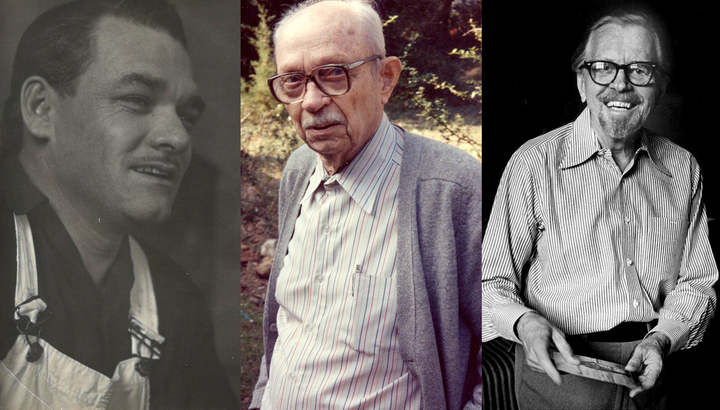The Carter Blog
A sticky situation: treating the Gentlings’ works on paper
Mar 24, 2021
As a paper conservator, I consider tape one of the most damaging condition issues I find on paper objects. As tape ages, its adhesive layer can migrate into the paper fibers, causing transparency, brittleness, or staining, similar to what can be seen in Figure 1. The longer the tape remains on the paper, the more difficult it is to repair or reverse the damage. So, when I began treating the Gentling collection, which consists of almost 800 works, the amount of tape used by Stuart and Scott Gentling in their process was a nightmare from a conservation standpoint, especially considering the tapes present were likely more than a decade old.
The Gentlings’ use of tape was most prominent on a number of multilayered preparatory sketches. These works are made of numerous individual drawings arranged and taped together to form the composition. One such piece can be seen in Figure 2, where the individual sheets of paper and each piece of tape have been outlined. The preparatory sketches were then traced and transferred to watercolor paper prior to being painted. Since these multilayered pieces were such an integral part of the Gentlings’ artistic process, conserving their composition and structure was a priority for future research initiatives.
Normally, when tape is found on paper objects, it is documented photographically and removed to prevent further damage to the work. However, the tape on these multilayered pieces was an important part of the overall composition, and its removal would cause valuable information to be lost. So, treatment involved developing a process that would allow for the removal of the tape to prevent future damage changing the work’s appearance or losing the significance of the tape in the brothers’ artistic process.
Tape typically consists of a pressure-sensitive adhesive layer and a backing material, called the carrier. Most often the tapes used by the Gentlings had a paper carrier, allowing them to draw on the tape, as can be seen in Figure 3. My treatment plan was to remove the adhesive layer, which causes the most damage to the object, but preserve the carrier. Then I would reapply the backing to the work, preserving the appearance of the tape, only without the damaging adhesive layer.
First, I had to carefully document the location of every drawing and piece of tape that made up the multi-layered works. Then I began the process of removing each piece of tape, carefully tracking where it belonged. I treated each piece of tape individually by removing the adhesive from the carrier using a small metal spatula, an eraser, or solvents depending on the type of adhesive. Then, due to their brittleness, each carrier was lined, adhering it to a secondary piece of paper for support. I then hinged the lined carriers in their correct location, using folded Japanese paper tabs and reversible adhesives that have excellent aging properties.
By removing the adhesive layer while preserving the paper backing of the tape, I was able to maintain the composition and structure of these complex works without losing the drawings present on the tape backings (Figure 4). While going to the extent of removing the adhesive layer and preserving a tape’s backing is not common when conserving works on paper, the role that the tape played in the Gentlings’ artistic process made each piece of tape an important part of these works that needed to be preserved.
In August 2019, the Carter announced the establishment of the Gentling Study Center to support the acquisition, research, and conservation of the work and archives of Scott and Stuart Gentling. In addition to the work done as part of the Gentling Study Center’s first project, the first comprehensive career retrospective of these artists will open at the Carter in September 2021.






